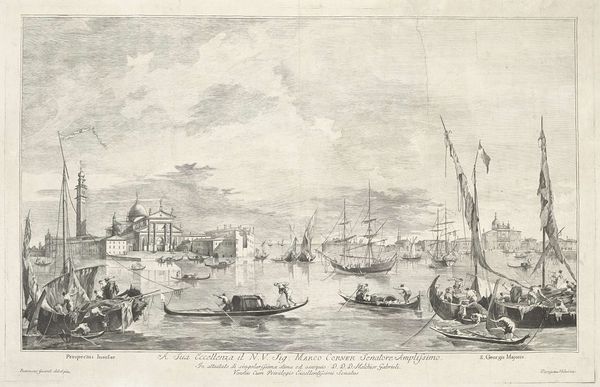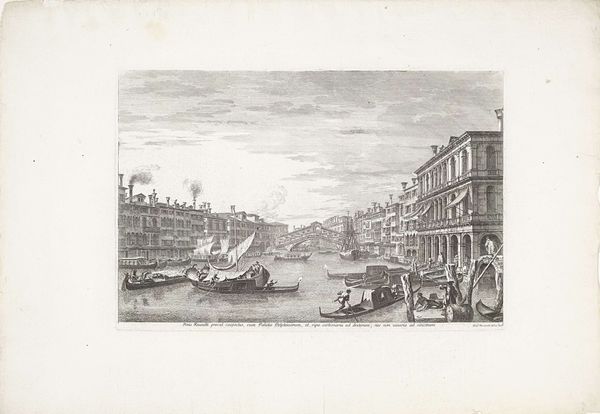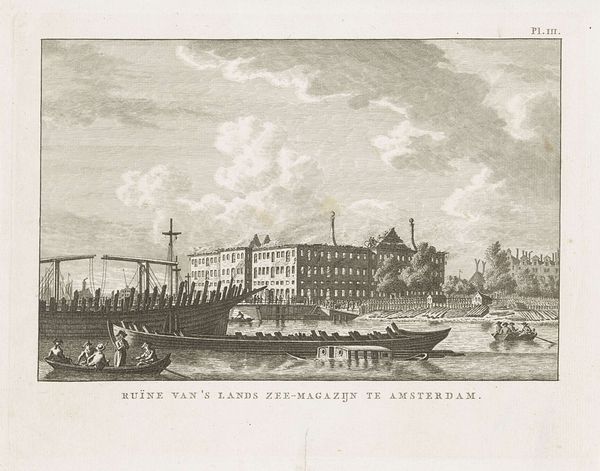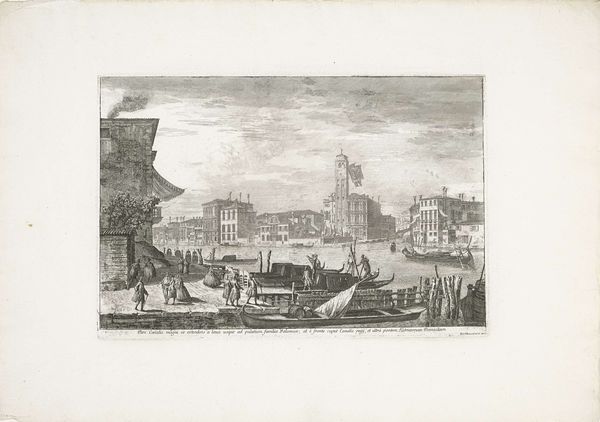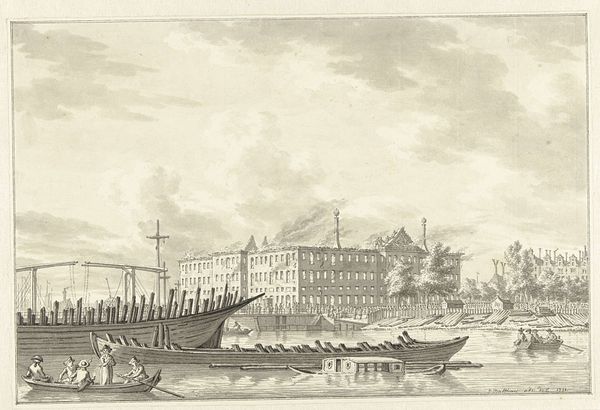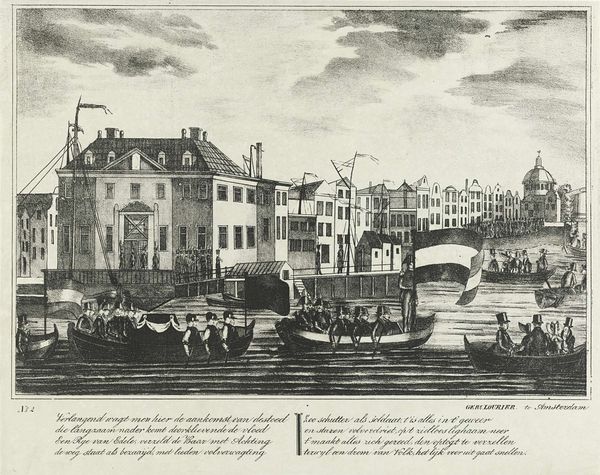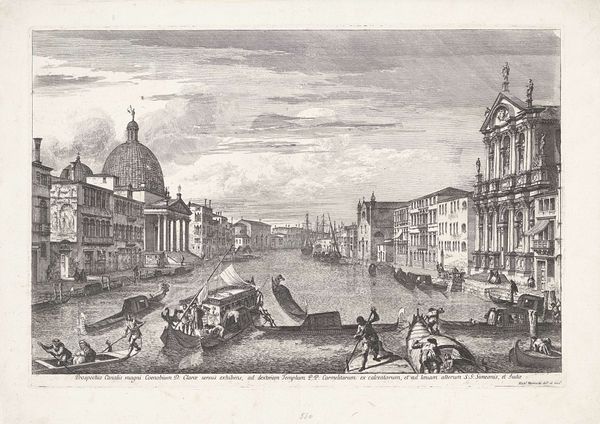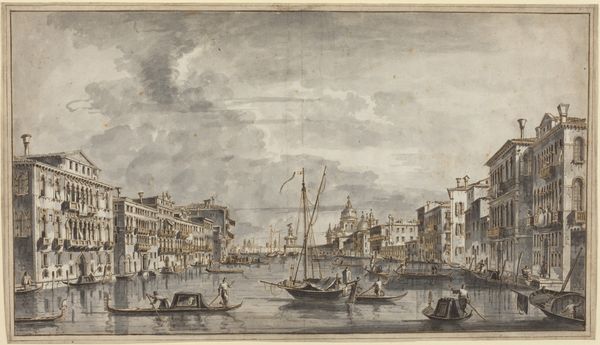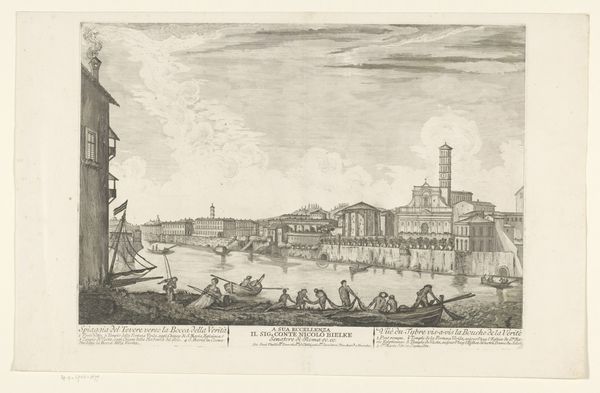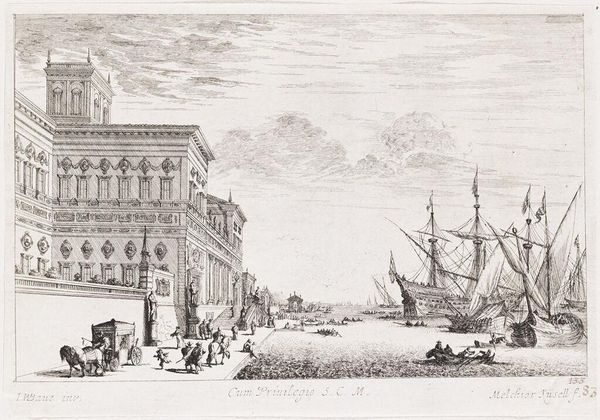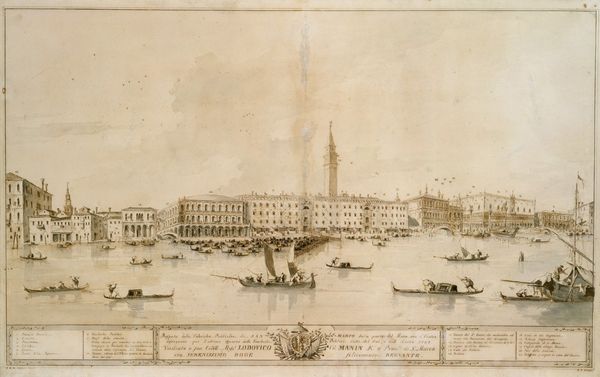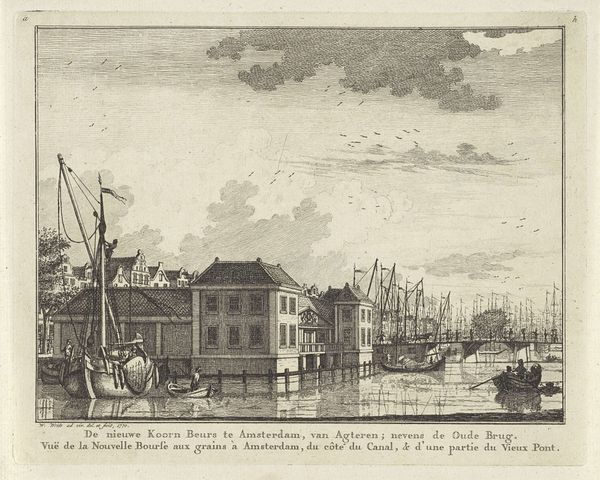
Dimensions: height 401 mm, width 638 mm
Copyright: Rijks Museum: Open Domain
Curator: Looking at this engraving, titled "Het Canal Grande te Venetië," produced sometime between 1737 and 1766, presumably by Dionigi Valesio, I'm immediately struck by the meticulous detail. The way he’s captured the textures of the buildings, the ripples in the water... Editor: The overwhelming stillness and emptiness. Considering the vibrancy that Venice is known for, the monochrome palette makes it a bit melancholy and the lack of many figures gives a ghostly mood. It looks like a theater backdrop instead of capturing actual urban activity. Curator: Well, perhaps that speaks to the limitations of the engraving process at the time. These cityscape prints were, in many ways, precursors to photography, designed to disseminate views of famous locations. They were reproduced and consumed within specific cultural and economic contexts, largely among educated elites eager to possess images of Grand Tour destinations. It highlights the cultural value attached to Venice, doesn't it? Editor: Absolutely, but whose Venice are we seeing? The elite patrons who commissioned and collected these works had specific perspectives, of course. How do these depictions of the Grand Canal serve power? Do they obscure the labor and realities of the working-class Venetians, the folks actually manning these boats and living behind those facades? Curator: That's where it gets interesting. Valesio focuses primarily on the architectural splendor and scenic waterways, aligning perfectly with the tastes of wealthy tourists and nobles, eager to appreciate Venetian refinement. It shows the public face of Venetian authority. But yes, perhaps it smooths over the social realities that allowed such refinement to exist. Editor: Exactly! Think about what it omits and how it idealizes. The water in reality was much dirtier, the social interactions more complex. We have to be critically aware of how it glosses over certain details, effectively sanitizing Venice. How it becomes a commodity, consumed at a distance, reinforces existing hierarchies, creating an accessible but heavily curated and thus mediated version of the city for outside elites. Curator: A mediated version which solidified Venice as a desirable location, which increased trade. Which in turn sustained those living here. In that sense the print played a positive, although selective role. I have new appreciation for how these landscape prints served dual purposes – historical document and propaganda machine, perhaps? Editor: Exactly! It allows me to see the social and economic engines in motion in the historical imagery itself!
Comments
No comments
Be the first to comment and join the conversation on the ultimate creative platform.
